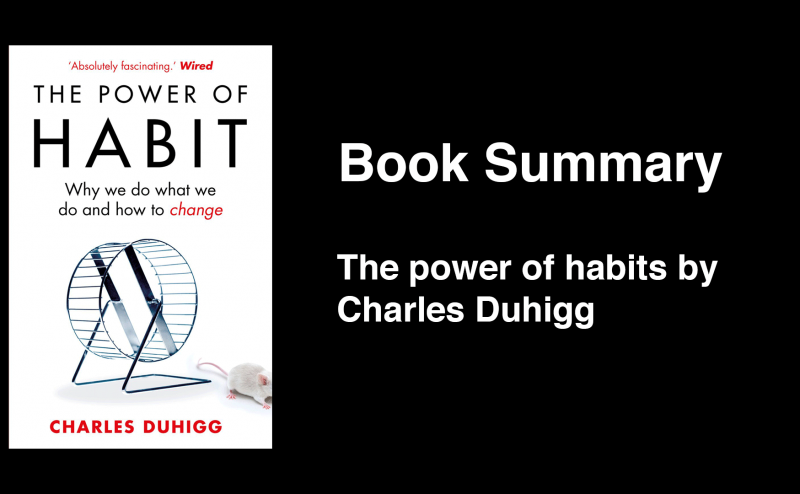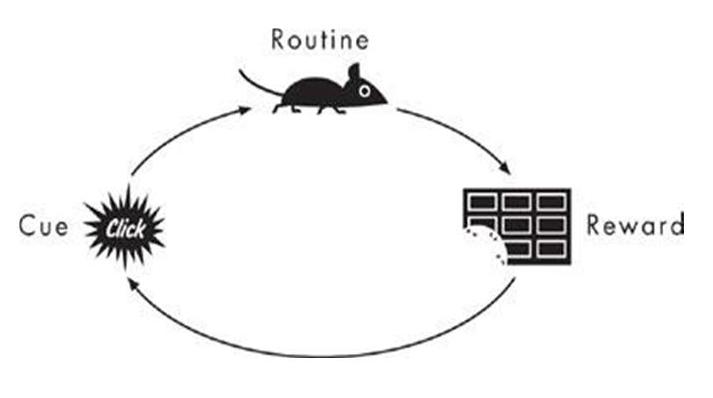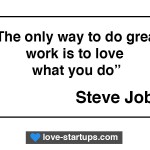
Book summary – The power of habits
Author Description
Charles Duhigg, born in 1974, is an American journalist and non-fiction author. He is a reporter for The New York Times and the author of two books on habits and productivity.
Book summary
This book includes some relevant examples that explain why habits are part of our daily life and they can be changed. I personally tried to change my habits 1 year ago and started going to the gym and lost 16 kgs. I then decided to read this book to really have a better understanding of habits and learn how to keep the good habits, create new good ones and remove the bad ones. Here is the link.
Part 1 – The habits of individuals
Chapter 1 – The habit look: how habits work
The book describes an MIT research trying to find out if the basal ganglia could help rats to create habits and how habits work. The rats were placed into a T-shaped maze with chocolate at one end. The rat had to find the chocolate starting from opening a partition with a loud click sound. The goal was to repeat the process and over again to see how the rats would react over time.
The experimentation shows that the more the rat was doing the experiment, the less he was using his brain and the more he was using his basal ganglia. At first, the rat has to discover what routine could get a reward, after doing the process over and over again, the rat did not use his brain to find the chocolate, it was using a habit that was recalling a pattern from the basal ganglia to find the chocolate.
1. Cue. a trigger that tells your brain to go into automatic mode and which habit to use.
2. Routine. a physical, mental, or emotional behavior that occurs right after the cue.
3. Reward. A positive stimulus that tells your brain that the routine works well, and is worth remembering.
So chapter 1 explains that we do not always use our brain on every action we take. In fact, if we repeat an action over and over again, the basal ganglia will recall the pattern according to the repeated action that we take.
Chapter 2 – The craving brain: how to create new habits
The second chapter describes how companies are using habits to sell a particular product. In fact, in order for people to buy a product over and over again, companies needs to identify a craving. Identifying the cue and the reward will not make a habit last unless there is a craving. in fact, as we all know, craving is a powerful desire for something. According to the habit loop, a craving will anticipate the desired reward.
Shultz and his experiments on monkey’s brain
For example, Shultz, a researcher, started a few experiments in order to find out how reward works in a monkey’s brain. He placed the monkey in front of a screen where he needed to touch the lever and when the shape appeared, he would receive a drop of blackberry juice from a tube. The monkey started the experiment with no interest in what was happening on the screen, but after the first drop of blackberry juice, the monkey started to take the experiment very seriously as he loved that juice. Then, after figuring out the process, the monkey continued over and over again the experiment for the craving of blueberry juice.
Now here come the interesting part of the experiment. Shultz changed the experiment by not always giving the monkey a drop of juice when he was touching the lever while seeing a shape. Every time the monkey did not receive the drop of juice while doing the right thing, he started to feel bad, screaming and depress.
The toothpaste
The same scenario was required when Claude Hopkins was trying to figure out how to sell toothpaste. In fact, only 7% of the American population were brushing their teeth. By finding out what made people needed to constantly reuse the product, Claude convinced 65% of Americans to use the product. This success was not coming as a result of beautiful teeth but the sensation for that cool tingling. People are still now craving for that sensation and do not feel clean if they have not brush their teeth.
Thus, in order to perpetuate a habit, it is required to identify the craving as importantly as the cue and the reward.
Chapter 3 – The golden rule of habit change: why transformation occurs
In order to change a habit, you need to identify an old cue and an old reward and insert a new routine. By doing so, most behavior can be change if the cue and the reward stay identical. But without the belief that the change is possible, people are most likely to keep the old same routine. Indeed, people entering communities are more likely to create new good habits as others will help them believe that it is possible.
Anonymous Alcoholics
For example, Anonymous Alcoholics succeeded for the simple reason that they used old cues and rewards but only changed the routine. The goal of this community is to find new behavior and forget the old craving which is the consumption of alcohol. The secret of Anonymous Alcoholics is to make you believe that you can do it through the community. Most people started drinking again after a period of depression or simply a negative event. The ones that stopped drinking for a long time were the one that had the strongest willing to stop.
2 elements are required to change a habit:
- change the routine but keep the old cue and reward
- believe it is possible to change
Part 2 – The habits of successful organizations
Chapter 4 – Keystone Habits, or The Ballad of Paul O’Neill: Which Habits Matter Most
One keystone habit may create a chain reaction that may affect other habits or create new habits. In other words, a person’s behavior can change significantly by only modifying the routine of one keystone habit. What matters the most are the small win that you start noticing once implementing a new keystone habit.
Alcoa
For instance, Alcoa, an aluminum manufacturing giant was in a bad shape when O’Neill took over. Unlike other CEO, O’Neil did not focus on satisfying the shareholders by talking about boosting the profit and lowering the costs like most other CEO would. Instead, His only concern was on making a safe work environment. By doing so, O’Neill changed the company’s culture and brought workers and managers together. His goal was to aim for zero injuries. It ended up being one of the safest company in the United States.
habit loop:
- cue: employee injury,
- routine: report within 24h,
- reward: promoted by embracing the system
That “safety work” ended up building a new communication system to allow workers to quickly communicate to their managers, vice-president… The new company habit started to stick on everyone’s mind. People outside work started to warn other people about safety concerns and attempting a lecture to prevent them from getting an injury. All this changed ended up boosting the profits, increasing significantly productivity. All those small wins ended up making a big win.
Other habits like sports or money management often time lead to a better set of habits. In fact, individuals going to the gym regularly tend to eat healthier, are more productive at work and are less stressful.
Chapter 5: the Habit of Success: When Willpower Becomes Automatic
This chapter shows how willpower and self-discipline can have a bigger impact on academic performance as it is an essential ingredient for success. In fact, willpower is a skill that can be learned and can be turned into a habit. However, it is not just a skill. It is a muscle that can get tired as it works harder. Finally, willpower becomes automatic if you train it hard enough to do the right thing or one specific circumstance.
Stanford marshmallow experiment
The well-known Stanford marshmallow experiment that was conducted in the 60s and 70s was testing the willpower of children by giving them the choice between one small reward provided immediately or two small rewards if they waited for approximately 15 minutes. Like you would expect, some child ate their first marshmallow straight away and other waited 15 mins to receive the second marshmallow and got 2 rewards instead of 1 immediately. When the child grew up, researchers kept contact with them to find out how they have become. They found out that children that waited for the second reward were more likely to get a greater income than the ones that did eat the one small reward straight away.
A second experiment aimed to learn if willpower could get tired if it worked harder. Scientists decided to place on a table 2 dishes, one with hot cookies and another with radishes and an impossible puzzle to solve that student were not aware of. Half of the students were asked to eat the cookies and the other half only to eat the radishes while trying to solve the puzzle. The experiment shows that students eating cookies spent much more time to try to solve the puzzle than people that were given radishes. Indeed, students eating radishes were using their willpower in order to not eat a cookie so they did not have enough willpower left to patiently try to solve the puzzle.
Willpower can be though and is one of the most important skills to learn as it increases your chances on becoming successful.
Chapter 6: The Power of a Crisis: How Leaders Create Habits Through Accident and Design
Sometimes changes only occur after a terrible accident or big problem in a company or government. In other words, people get used to a bad habit until something important occurs that make them change into a good habit.
Rhode Island Hospital
For instance, Rhode Island Hospital was recently well known for major dysfunctions mainly caused by the poor relationship between surgeons and nurses. In fact, sometimes surgeons were not respecting nurses as they though they were superior in the hierarchy.
One day, an 80 years old patient came to the hospital and after a check up they realized that he was diagnosed with a subdural hematoma. In fact, blood was pooling within the left portion of his cranium, pushing against the delicate folds of tissue inside his skull. They decided to operate the patient but with an absence of information on the agreement documents, despite the concerns of the nurse, the surgeon did not listen and started to operate on one side of his head. But after finding no hematoma, they operated the other side of the head to remove the blood. However, The patient died 2 weeks later.
Since then, the hospital took all the measures to prevent this accident from happening again and all the staff agreed to change their habits and make sure to operate only if the rules were respected.
Even, if habits can be changed within an organization employees might not be ready for a change. But when an accident occurs, people are most likely to change as they realize the consequence of their actions might lead them to create another accident by not following the hospital principles.
Chapter 7: How Target Knows What You Want Before You Do: When Companies Predict (and Manipulate) Habits
By studying customer’s behaviors, companies can predict what a customer is most likely to buy or use. This allows them to offer the right product before they even know that they are going to buy it.
Target
Firstly, Target spent some time to study customers’ behaviors while buyers were shopping. In fact, the Target reward cards or other promotion card offers, allow the company to track their clients and know what they buy and when they buy it. A large amount of data has been recorded. Those records can be used to study customers’ behaviors and find out patterns that will predict what they will be buying next.
For instance, they were able to find out according to what a girl was buying if she was pregnant and when approximately the girl will give birth. In fact, The coming of a newborn is always a great opportunity for companies because customers tend to spend much more during that period and are not really looking at what they spend. This gives the company the possibility to send the right coupon to the right person. In order to hide the customer’s suspicion that the Target is spying them, the company decided to include with the customer’s expected purchases random products that they were not interested in buying.
In fact, The coming of a newborn is always a great opportunity for companies because customers tend to spend much more during that period and are not really looking at what they spend. This gives the company the possibility to send the right coupon to the right person. In order to hide the customer’s suspicion that the Target is spying them, the company decided to include with the customer’s expected purchases random products that they were not interested in buying.
OutKast’s tune “Hey Ya!”
Secondly, the music industry realized that even if OutKast’s tune “Hey Ya!” predicted to be a success, the music still ended up being unpopular. In fact, the song really struggled to become popular at the beginning but after looking that the fact that people as a habit would listen to the same kind of music, if you include an unpopular song between 2 popular songs, the unpopular song is more likely to become popular because of the habits of people listening to the other songs.
Thus, If you sandwich a new thing in old habits, it’s easier for the public to accept it.
Part 3: The Habits of Societies
Chapter 8: How Movements Happen
Chapter eight focus on 1 main example talking about the Montgomery bus boycott and the foundation and growth of the Saddleback Church. This chapter explains how leaders can influence a large number of people.
Social habits are habits that occur on a large number of people and aim to create a movement
Here is the 3 part process in order to create a movement listed in the book:
- A movement starts because of the social habits of friendship and the strong ties between close acquaintances.
- It grows because of the habits of a community, and the weak ties that hold neighborhoods and clans together.
- And it endures because a movement’s leader gives participants new habits that create a fresh sense of identity and a feeling of ownership.
If all those 3 parts are followed, the movement will reach a critical mass.
Chapter 9: The Neurology of Free Will: Are We Responsible for Our Habits?
In this chapter, you will hear a story of a man killing his wife while asleep and a story of a wife which gambled all the money she had, making her and her family bankrupt. The author explains how interesting the cases are, as a sleeping murderer can plausibly argue he wasn’t aware of his habit, and so he doesn’t bear responsibility for his crime. as it was judged as a primitive habit with a goal to only defend himself against threat while the gambler was judged responsible for her acts because she was supposed to control her bad habit and transform them to good habits.
In fact, the main point is that once you believe and understand that habits can be changed, you have the freedom and responsibility to remake them. No matter how strong a habit is, as long as you are aware the habit exists you have the ability to decide to change it.
Conclusion
In conclusion, this book provides a great explanation on how habits work, how to detect them, remove old habits to replace them with good habits. I recommend anyone to read that book as it will open your mind and clearly explains how the human behave when he is doing tasks without thinking.
Charles Duhigg, habit loop, Habits











[…] Habits are, in my opinion, the best way to learn how to never give up. The key is to keep the right habits and transform your bad habits into the good ones. Habits are part of our everyday life, as soon as we were born we started creating habits. They help us to save energy so that we do not use our brain as much. That is why they are so hard to change because it requires your brain to work hard before to change habits. But after pushing yourself for a few months, the new habits starts to kick in. If you need extra information about habits, here is a book summary of The power of habits. […]